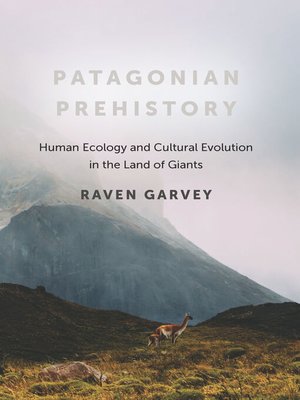Patagonian Prehistory
ebook ∣ Human Ecology and Cultural Evolution in the Land of Giants
By Raven Garvey

Sign up to save your library
With an OverDrive account, you can save your favorite libraries for at-a-glance information about availability. Find out more about OverDrive accounts.
Find this title in Libby, the library reading app by OverDrive.



Search for a digital library with this title
Title found at these libraries:
| Library Name | Distance |
|---|---|
| Loading... |
Generally portrayed as a windswept wasteland of marginal use for human habitation, Patagonia is an unmatched testing ground for some of the world's most important questions about human ecology and cultural change. In this volume, archaeologist Raven Garvey presents a critical synthesis of Patagonian prehistory, bringing an evolutionary perspective and unconventional evidence to bear on enduringly contentious issues in New World archaeology, including initial human colonization of the Americas, widespread depopulation between 8,000 and 4,000 years ago, and the transition from foraging to farming.
Garvey's novel hypotheses question common assumptions regarding Patagonia's suitability for prehistoric hunter-gatherers. She makes four primary arguments: (1) the surprising lack of clothing in parts of prehistoric Patagonia supports a relatively slow initial colonization of the Americas; (2) the sparse record of human habitation during the middle Holocene may be due to prehistoric behavioral changes and archaeological sampling methods rather than population decline; (3) farming never took root in Patagonia because risks associated with farming likely outweighed potential benefits; and, finally, (4) the broad trajectory of cultural change in Patagonia owes as much to feedback between population size and technology as to conditions in the rugged Patagonian outback itself.
Garvey's novel hypotheses question common assumptions regarding Patagonia's suitability for prehistoric hunter-gatherers. She makes four primary arguments: (1) the surprising lack of clothing in parts of prehistoric Patagonia supports a relatively slow initial colonization of the Americas; (2) the sparse record of human habitation during the middle Holocene may be due to prehistoric behavioral changes and archaeological sampling methods rather than population decline; (3) farming never took root in Patagonia because risks associated with farming likely outweighed potential benefits; and, finally, (4) the broad trajectory of cultural change in Patagonia owes as much to feedback between population size and technology as to conditions in the rugged Patagonian outback itself.







